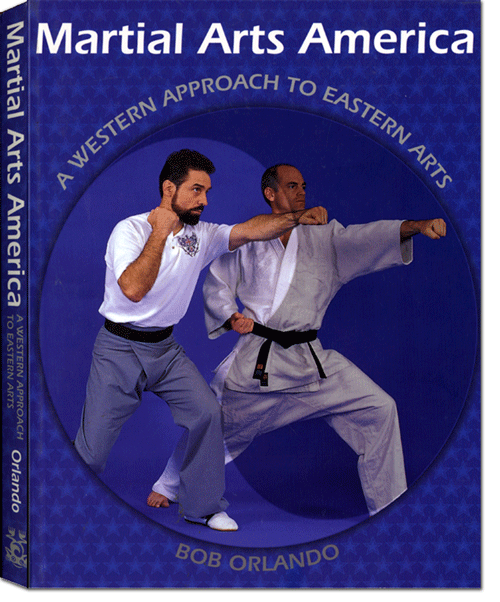|
The following is an expanded version of a letter originally submitted to Martial Arts Professional magazine in response to the publisher's sincere question, "How do you deal with the dichotomous nature of Eastern and Western philosophy?" (MAPro, January 2001) As a Christian and a martialist, I am intimately familiar with the tension that exists between
Eastern martial arts study and Western religion. For example, I know Christians who struggle
with their perceived conflict between Christ's edict to "turn the other cheek" and studying martial arts
for self-defense. By the same token, I know non-Christian martial artists who believe the
cheek-turners get what they deserve if they refuse to defend themselves in the face of a physical attack.
I also know devout Christians who feel that just bowing in a martial arts school has religious overtones
and are, therefore, uncomfortable with the practice. In each of these cases, the issue in question is
whether there is a conflict between belief in Western religion and the practice of Eastern martial arts.
At the root of this controversy are a serious communication breakdown on the one hand and a fundamental
misunderstanding of Scripture on the other.
The philosophical and religious aspects of the Eastern martial arts are not so tightly entwined with the physical principles that the two cannot be separated. In fact, the former are not at all necessary for developing the physical skills that the overwhelming majority of our students seek. Since they are, in fact, unnecessary, and since some (potential customers) are sensitive to the issue of Eastern religious influences, then the wise teacher either learns which aspects are offensive and why and avoids them, or he thoroughly and frequently explains the functional purpose behind any practice that may be perceived as part and parcel of Eastern religion. Unlike the secular approach, the scriptural perspective must appeal to both logic and the authority of Scripture, with Biblical references and citations to support all arguments. For example, when addressing the issue of "turning the other cheek," I usually begin by citing passages wherein the apostles (and even Jesus himself) did not simply yield to physical assault. When tackling the question of religious influences in Eastern martial arts, I discuss both meditation and bowing. Every step of the way, I appeal to reason and draw from Scripture to support my belief that these two practices need not necessarily be in conflict with Judeo-Christian religious beliefs. (Click here for further discourse specifically addressing Christian participation in Asian martial arts.) For those determined to incorporate their personal religious beliefs and convictions into their martial art instruction, allow me to add this final point as food for thought:
|
|||||
|
Footnotes:
|
|
©Copyright Bob Orlando, 1997-2016 All rights reserved. |
http://www.OrlandoKuntao.com
E-mail: ron@orlandokuntao.net |
Last update:
Aug. 6, 2016 by Bob Orlando |
